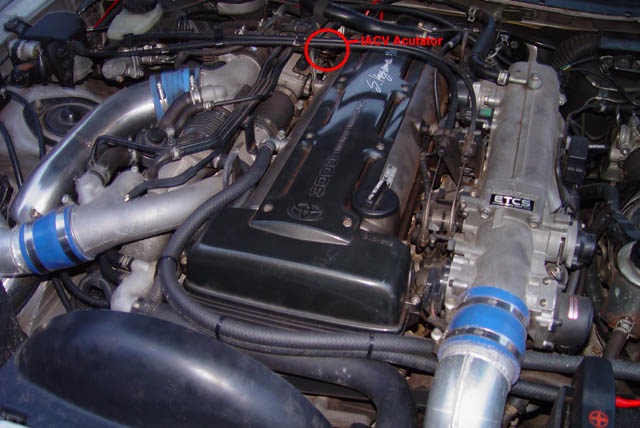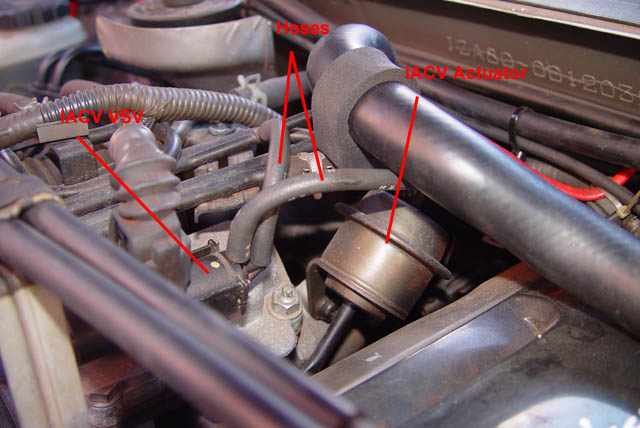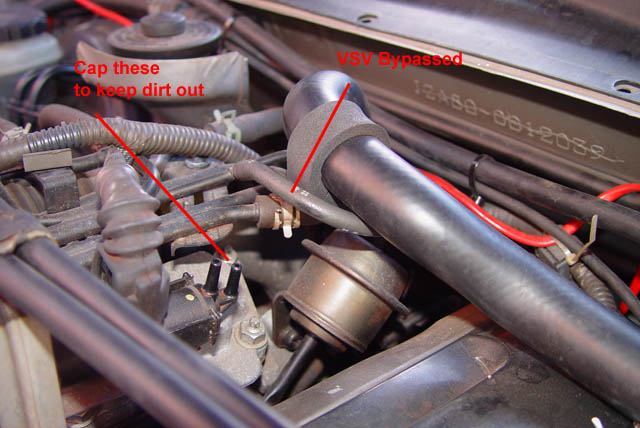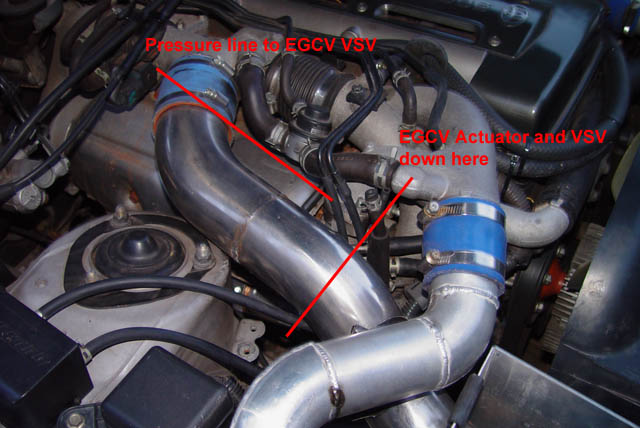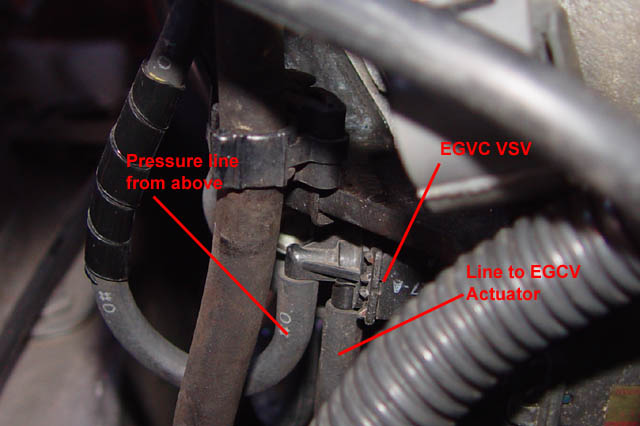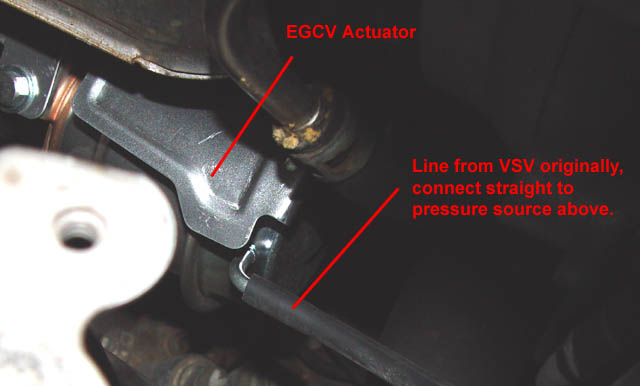| 5 minute TTC (True Twin Conversion) |
|---|
| by Andrew Petrie |
Some people love the Supras sequential twin turbo system, some hate it. I thought I was part of the first group, but have now realised I'm part of the second. I suspect that many people are like me - they buy a Supra, and love the low end torque the sequential system gives, but sooner or later they start to modify the car to make more power. The more they modify the car, the worse the sequential system works, and eventually it starts to detract from the driving experience. When I first found myself in this situation, I was reluctant to try TTC (converting the turbos to parallel operation) - I didn't want to lose the low down torque... and besides TTC is a pain in the ass to do, right? Well, for anyone who's never tried TTC, here's the easiest way in the world to do it!!
Requirements:5 mins
Theory:By bypassing the VSV's that control the sequential operation,
the system stays locked in parallel mode due to the fact that the pressure tank
stops the pressurised air escaping.
Method:NOTE: Before we start this, I suppose I better point out that if you try this, and kill yourself or your car in anyway, it's not my fault, hell I can't even imagine HOW you could kill yourself or your car by doing this, but I'm sure some American wally will find a way.... NOTE 2: Following on from that last comment, this has only been tried on a JDM (that's Japanese) Twin Turbo Supra, although the theory holds just the same on Export spec cars... There are two VSV's to bypass to complete this mod (there is a third VSV/actuator etc in the system, but it doesn't do jack once you're in parallel mode, so ignore it). First, bypass the IACV (Intake Air Control Valve) VSV.
This first photo shows the general location of the IACV.
Here, you can see the pressure line (in the background) feeding
the IACV actuator via the IACV VSV (the VSV is simply an electronically controlled
valve).
Simply pull off the hoses, and connect one directly from the pressure line to the actuator. Done. That should have taken all of about 2 minutes. It would probably be a good idea to put caps on the exposed connectors of the VSV - just to stop engine grime getting in there and blocking it up if you ever want to use it again.
The second VSV you need to bypass is the EGCV (Exhaust
Gas Control Valve) VSV.
Ok, you can see here the general location of the EGCV bits - under the intake piping. To complete this mod, you're going to take the hose from where it says "Pressure line to EGCV VSV", and connect it straight to the EGCV actuator. So follow that hose down until you find the EGCV VSV, and pull it off the VSV.
Here you can see the VSV itself... sort of... anyway, as stated, remove "Pressure line from above", and follow "Line to EGCV actuator" to find the actuator.
This is the EGCV actuator (unless yours was stuffed and recently
replaced, it probably won't be as shiny as mine :) Well, actually, not quite yet. You see until the system is pressurised, it won't be in parallel mode... So take the car for a drive, and get it to boost. When it first boosts, it'll be kinda funny, because as it comes on boost, it'll cause the second turbo to come on line as soon as you start making boost. After the first time, you should notice three things. Firstly, the car sounds a lot beastier!! That's because you're no longer shutting off half the exhaust when you're under 4000 rpm. Second boost comes on MUCH more smoothly. Third, it doesn't come on fully until about 4000 rpm. You will get some boost from about 3000rpm, but not all of it. Your immediate impression might be "this is crap, the car seems so sluggish". But give it some time (a few days to a week, depending on how much you drive), a few things will happen. You will get used to the car needing a few more revs to really boogie, the computer needs some time to learn that there's no boost down low, so it can advance ignition timing (you may notice some black smoke from severe over-fuelling at first too). It'll also take a while to realise that the car is noticeably more fuel efficient, and once the computer has sorted itself out, you realise that this is not some poxy little 2 litre 4 cylinder, the NA supra makes as much torque as a WRX, so it doesn't need the turbo down low for normal driving. But mostly, I love the linear turbo response - the 3000-4000 rpm range is useful again, and the Supra seems a whole lot more fun to drive. Enjoy, - Andrew Petrie |
Back to Home Page
